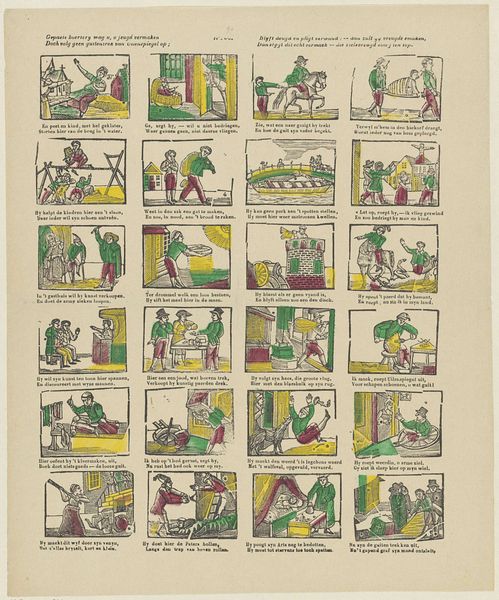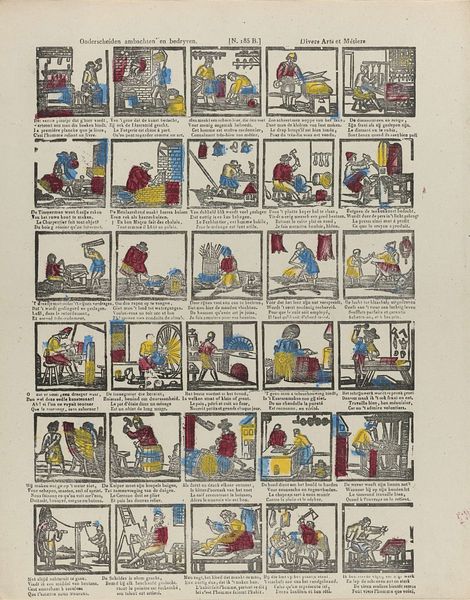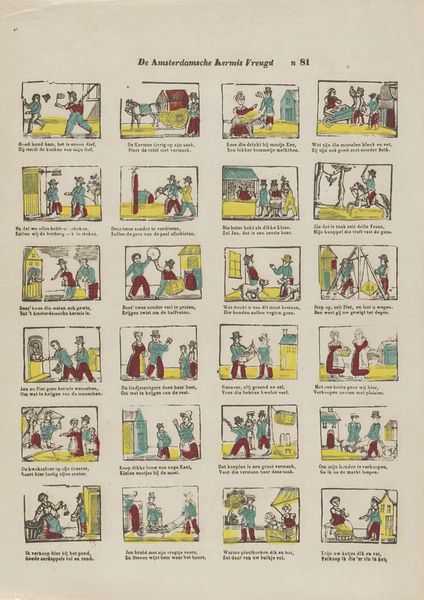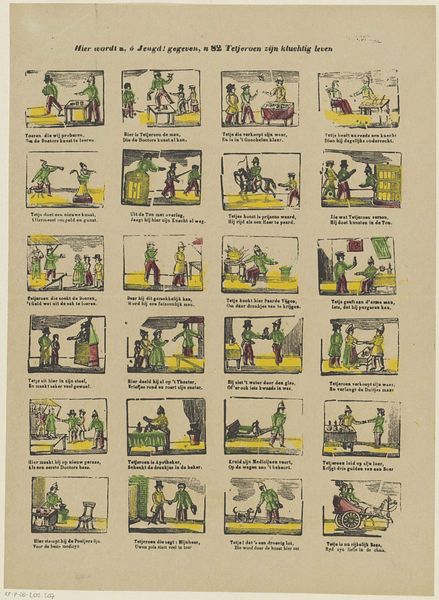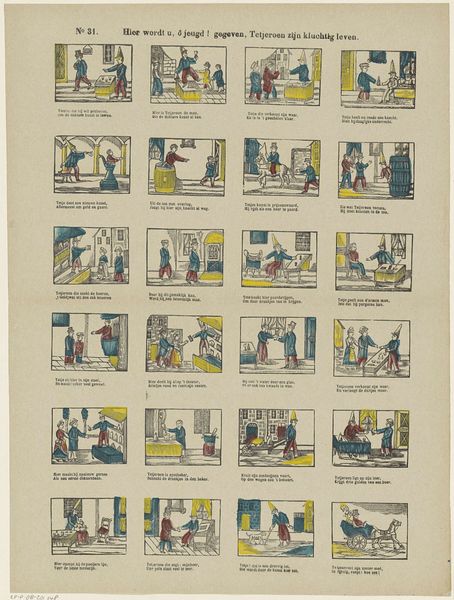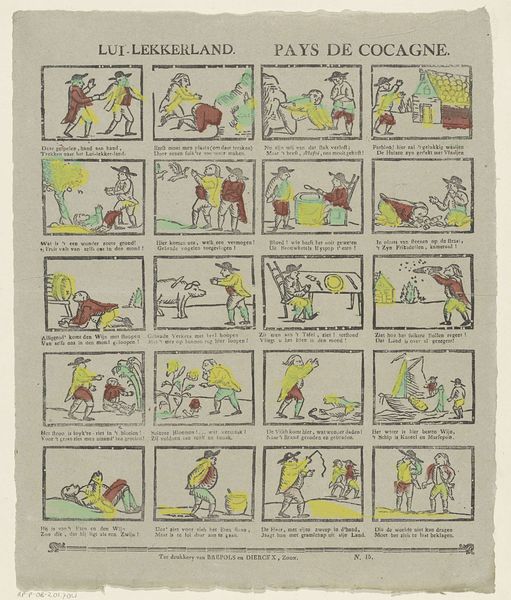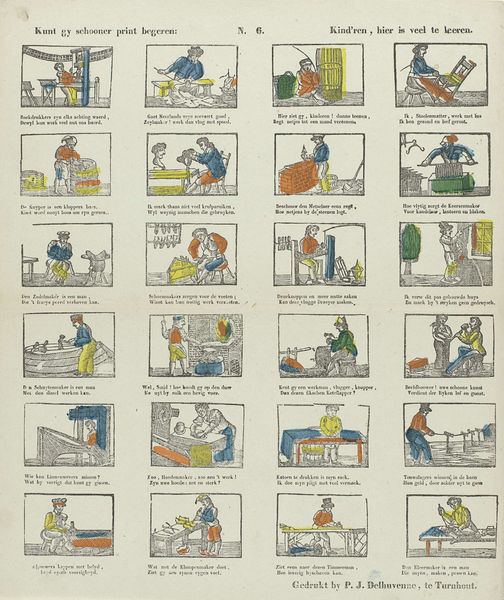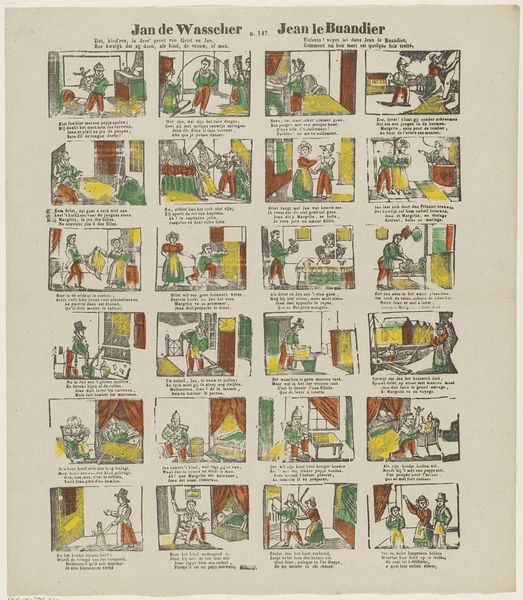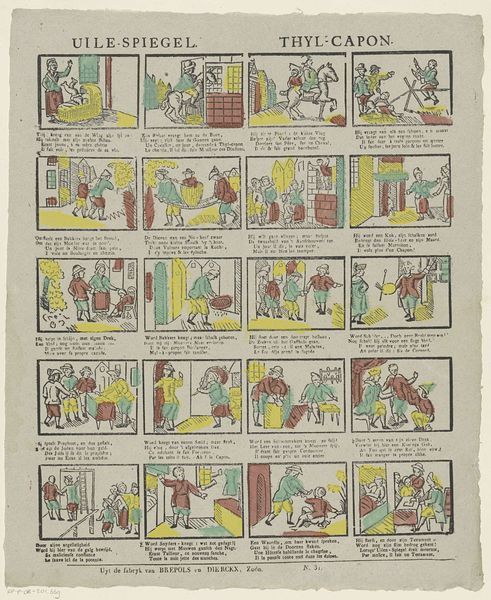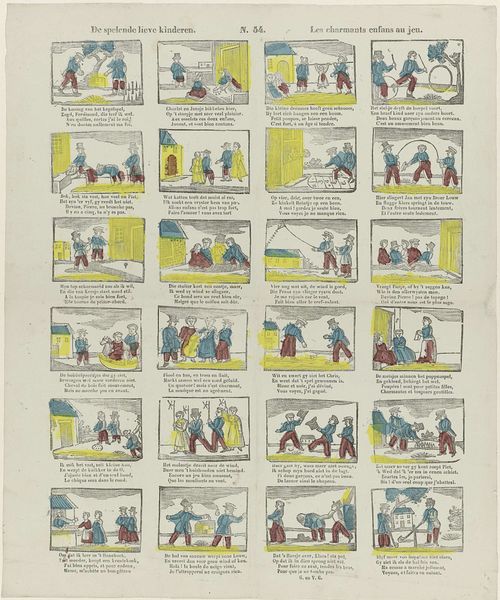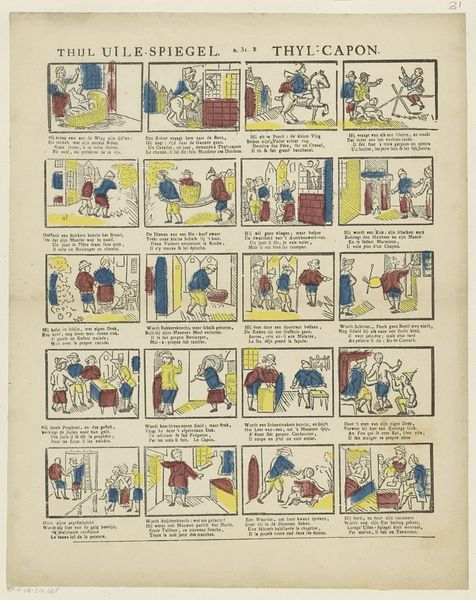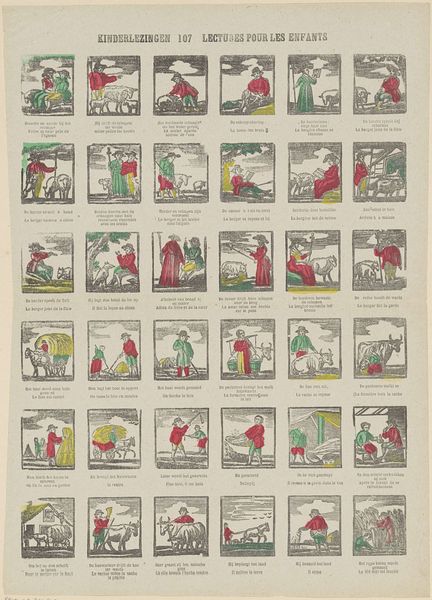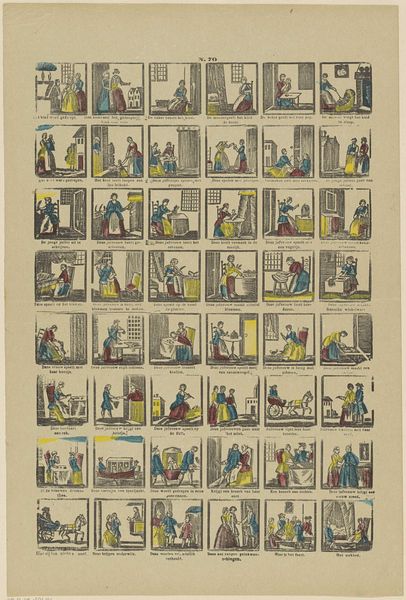
print, woodcut
#
comic strip sketch
#
narrative-art
#
comic strip
# print
#
old engraving style
#
woodcut
#
comic
#
genre-painting
Dimensions: height 427 mm, width 325 mm
Copyright: Rijks Museum: Open Domain
Curator: Today, we're looking at Franciscus Antonius Beersmans’ “Kinderspelen,” a woodcut print dating from 1866 to 1902. Editor: What immediately strikes me is how the artist captures the seemingly boundless energy of children at play within such confined, miniature panels. Curator: Indeed, the compartmentalization into sequential narratives offers an intriguing exploration of visual syntax. Beersmans employs a simplified, almost diagrammatic approach, using line and blocks of color to construct a lexicon of childhood actions. Consider the composition: each panel operates as a distinct semiotic unit. Editor: While I agree on the segmentation, to divorce it from its societal implications seems incomplete. "Kinderspelen" translated to "Children's Games" appears almost ethnographic in its display of innocence. But what rules of conduct, visible through play, are being both upheld and subverted here? Curator: One cannot ignore how the use of line creates both the figures and implied movement through space. It’s economical in its effect. The artist has achieved considerable articulation with very spare elements, consider the gestures, their placement. Editor: I think this invites deeper reflection on the position of childhood at the turn of the century—the romanticization, yes, but also the expectations of proper behavior in terms of budding maturity and their participation within the capitalist machine. Curator: Returning to form, observe the artist's conscious manipulation of depth. The spatial flatness emphasizes a kind of universality that asks you to consider its underlying, immutable forms. Editor: However, what feels frozen might, to modern sensibilities, speak of constriction, social expectation. Are these candid snapshots, or models to be imitated and adhered to? Curator: I appreciate your viewpoint and your effort to extend our experience of the visual into other domains of experience. Editor: Thank you, by considering its form and content as integrated, the seemingly straightforward and antique yields nuanced readings on society and representation.
Comments
No comments
Be the first to comment and join the conversation on the ultimate creative platform.
